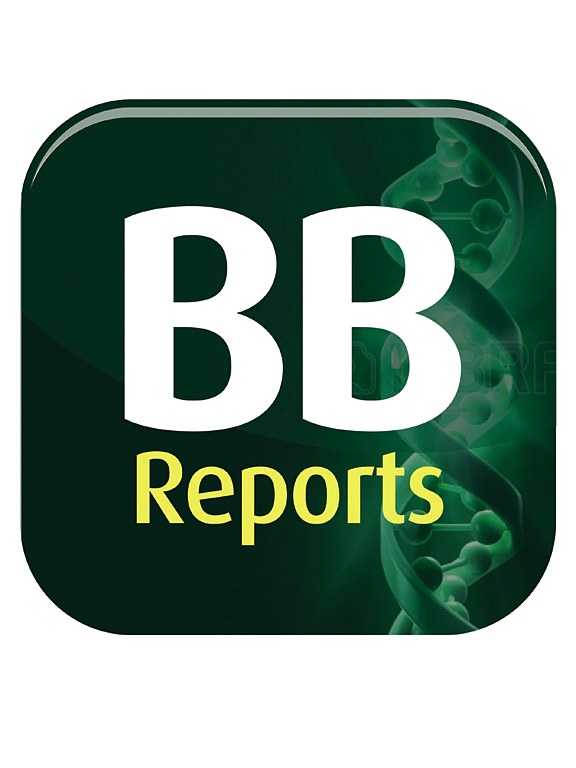Neoadjuvant PD-1 blockade induces the autophagy of immune cells: a new target for synergistic therapy of recurrent glioblastoma
IF 2.2
Q3 BIOCHEMISTRY & MOLECULAR BIOLOGY
引用次数: 0
Abstract
Background
Neoadjuvant PD-1 blockade may incidentally modulate autophagy in immune cells, which could contribute to drug resistance and tumor relapse. However, the specific immune cell subsets affected by neoadjuvant PD-1 blockade in terms of autophagy remain to be fully elucidated, as well as the drugs that might influence these processes.
Methods
Single-cell sequencing data from tissues of recurrent glioblastoma (GBM.rec) and GBM treated with neoadjuvant PD-1 blockade (GBM.PD1) were analyzed to investigate the changes in autophagy within immune cells in the GBM.PD1 group. Subsequently, the functional characteristics of subtypes regulated by membrane proteins were explored, and potential drugs targeting key immune cell subsets mediated by these proteins were identified.
Results
Neoadjuvant PD-1 blockade significantly increased the proportion of lymphoid cells with elevated autophagy. This elevated autophagy level was associated with specific ligand-receptor interactions in GBM, such as HLA-DRA–CD4. Immune cell subtypes, particularly those with both lymphoid and myeloid signatures (L + M cells, APOE + cells), exhibited strong associations with autophagy. These L + M cells demonstrated significantly more T cell-related interactions in the GBM.PD1 group, with notable receptor-ligand interactions like GZMA-F2R. Furthermore, ribavirin, which targets CXCL8 and IL6, was identified as a potential drug candidate for targeting L + M cells.
Conclusion
L + M cells may represent critical immune components involved in autophagy induced by neoadjuvant PD-1 blockade. The interactions between HLA-DRA and CD4, as well as between GZMA and F2R, are crucial for modulating immune responses. Moreover, ribavirin, targeting CXCL8 and IL6, has the potential to enhance the efficacy of neoadjuvant PD-1 blockade.
新辅助PD-1阻断诱导免疫细胞自噬:复发性胶质母细胞瘤协同治疗的新靶点
新辅助PD-1阻断可能偶然调节免疫细胞的自噬,这可能有助于耐药和肿瘤复发。然而,新辅助PD-1阻断在自噬方面影响的特异性免疫细胞亚群,以及可能影响这些过程的药物,仍有待充分阐明。方法分析复发性胶质母细胞瘤(GBM.rec)和新辅助PD-1阻断剂(GBM. pd1)治疗的GBM组织的单细胞测序数据,探讨免疫细胞自噬在GBM中的变化。PD1组。随后,研究了膜蛋白调控的亚型的功能特征,并确定了针对这些蛋白介导的关键免疫细胞亚群的潜在药物。结果新辅助PD-1阻断显著增加了自噬升高的淋巴样细胞比例。这种升高的自噬水平与GBM中特定的配体-受体相互作用有关,如HLA-DRA-CD4。免疫细胞亚型,特别是那些同时具有淋巴和骨髓特征的细胞(L + M细胞,APOE +细胞),表现出与自噬的强烈关联。这些L + M细胞在GBM中表现出更多与T细胞相关的相互作用。PD1组,具有显著的受体-配体相互作用,如GZMA-F2R。此外,靶向CXCL8和il - 6的利巴韦林被确定为靶向L + M细胞的潜在候选药物。结论l + M细胞可能是参与新佐剂PD-1阻断诱导自噬的关键免疫成分。HLA-DRA和CD4之间以及GZMA和F2R之间的相互作用对于调节免疫应答至关重要。此外,针对CXCL8和IL6的利巴韦林有可能增强新辅助PD-1阻断的疗效。
本文章由计算机程序翻译,如有差异,请以英文原文为准。
求助全文
约1分钟内获得全文
求助全文
来源期刊

Biochemistry and Biophysics Reports
Biochemistry, Genetics and Molecular Biology-Biophysics
CiteScore
4.60
自引率
0.00%
发文量
191
审稿时长
59 days
期刊介绍:
Open access, online only, peer-reviewed international journal in the Life Sciences, established in 2014 Biochemistry and Biophysics Reports (BB Reports) publishes original research in all aspects of Biochemistry, Biophysics and related areas like Molecular and Cell Biology. BB Reports welcomes solid though more preliminary, descriptive and small scale results if they have the potential to stimulate and/or contribute to future research, leading to new insights or hypothesis. Primary criteria for acceptance is that the work is original, scientifically and technically sound and provides valuable knowledge to life sciences research. We strongly believe all results deserve to be published and documented for the advancement of science. BB Reports specifically appreciates receiving reports on: Negative results, Replication studies, Reanalysis of previous datasets.
 求助内容:
求助内容: 应助结果提醒方式:
应助结果提醒方式:


